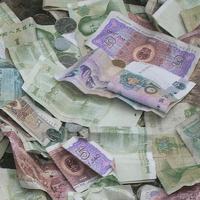BEIJING -- The global financial crisis catapulted China into a position of international economic leadership a decade earlier than Beijing's strategists had intended. That significantly increased the urgency of rebalancing the Chinese economy away from the low-quality, export model toward higher-value, domestically driven growth.
One consequence has been new and accelerated patterns of Chinese trade and investment abroad. For the United States, China's largest economic partner, the implications of this new multidirectionalism are significant. But with recent figures showing that bilateral investment between the two countries is contracting, the U.S. must adapt its approach to this issue to ensure it benefits from the forthcoming chapter in China's domestic growth story.
American investment and consumption were the two key drivers of China's economy in its early reform years. By the time the global financial crisis struck, China had amassed $2 trillion of foreign exchange reserves, and it has added another trillion since. The U.S. economy benefitted from cheap, inflation-suppressing Chinese goods, while China's absorption of American debt was a key facilitator of the pre-2008 credit bubble.

